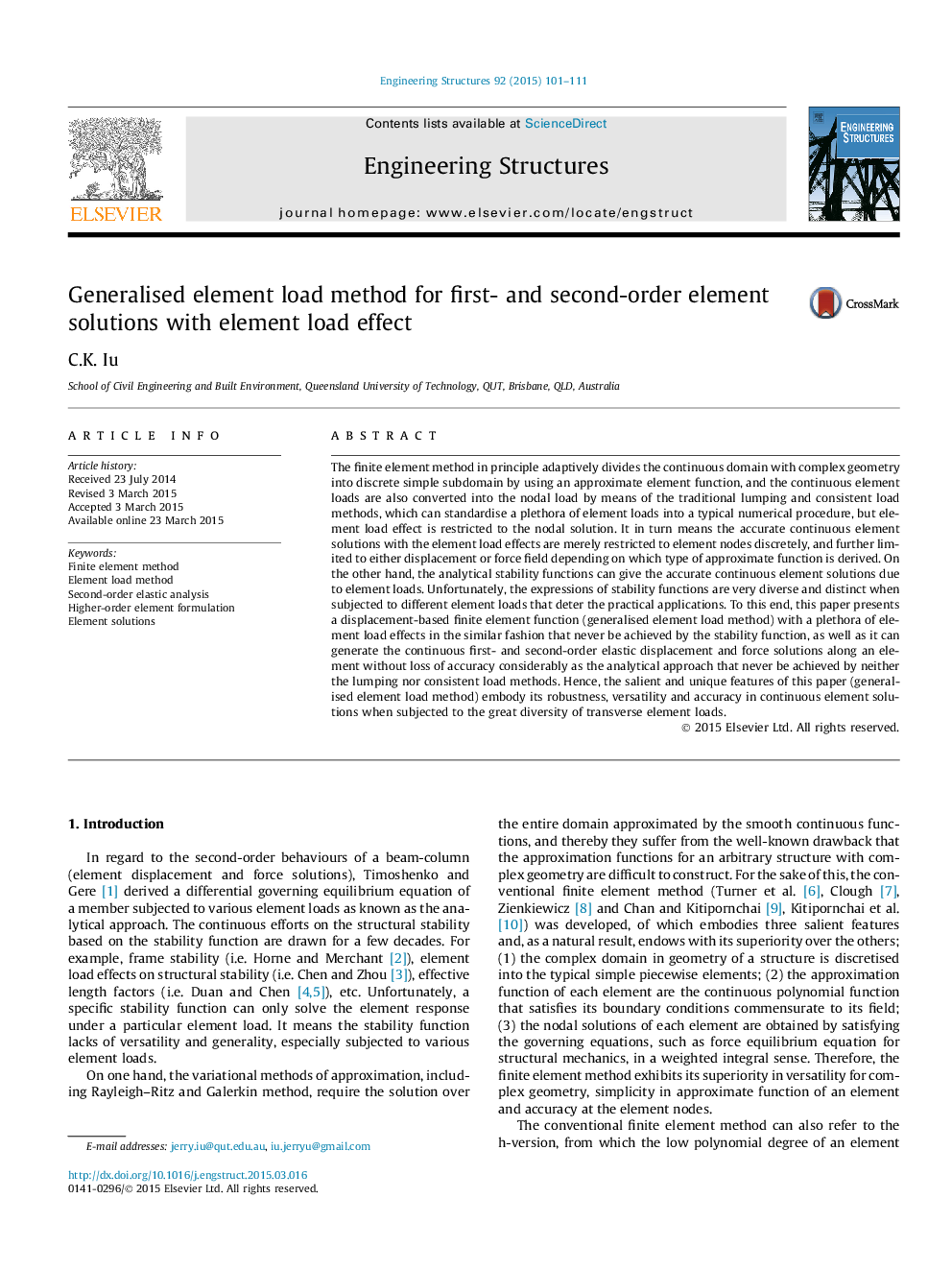| کد مقاله | کد نشریه | سال انتشار | مقاله انگلیسی | نسخه تمام متن |
|---|---|---|---|---|
| 266325 | 504352 | 2015 | 11 صفحه PDF | دانلود رایگان |
• This method gives the accurate second-order elastic element displacement and force solutions.
• This method evaluates the second-order member bowing effect along an element due to the element load present higher-order element function replaces different stability functions with element loads.
• All in all, this method embodies the significant values of simplicity, accuracy and versatility.
The finite element method in principle adaptively divides the continuous domain with complex geometry into discrete simple subdomain by using an approximate element function, and the continuous element loads are also converted into the nodal load by means of the traditional lumping and consistent load methods, which can standardise a plethora of element loads into a typical numerical procedure, but element load effect is restricted to the nodal solution. It in turn means the accurate continuous element solutions with the element load effects are merely restricted to element nodes discretely, and further limited to either displacement or force field depending on which type of approximate function is derived. On the other hand, the analytical stability functions can give the accurate continuous element solutions due to element loads. Unfortunately, the expressions of stability functions are very diverse and distinct when subjected to different element loads that deter the practical applications. To this end, this paper presents a displacement-based finite element function (generalised element load method) with a plethora of element load effects in the similar fashion that never be achieved by the stability function, as well as it can generate the continuous first- and second-order elastic displacement and force solutions along an element without loss of accuracy considerably as the analytical approach that never be achieved by neither the lumping nor consistent load methods. Hence, the salient and unique features of this paper (generalised element load method) embody its robustness, versatility and accuracy in continuous element solutions when subjected to the great diversity of transverse element loads.
Journal: Engineering Structures - Volume 92, 1 June 2015, Pages 101–111
